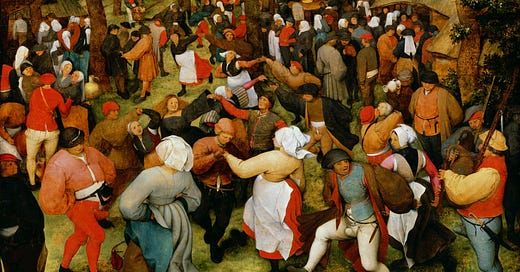“Katabasis” is the Greek word for a descent into the underworld. Think Juno, Ceres, Orpheus, et al. “Anabasis” is its antonym: coming up out of the depths. The most famous Anabasis is not mythical: it’s the conquest of Persia by Cyrus, chronicled by Xenophon. But anabasis can function as a metaphor, too, as it does in Rachel Eisendrath’s wonderful essay, “New York Anabasis,” in the latest Yale Review.
Eisendrath writes ecstatically about visual artists who disdain the depths of introspection to revel in the warmth of crowds: Pieter Bruegel the Elder, in the Dutch Renaissance, and Leon Kossoff, in the twentieth century. “What Bruegel wanted to show,” she writes, “was not the internal life of the individual but the external life of the group—that is, communal life, life lived in the indefinite article.”
But for Eisendrath, you can’t have one without the other:
To muse from within a solitary room, to try to find a ground of being that includes only your thought in relation to itself, will …
Keep reading with a 7-day free trial
Subscribe to Under the Net to keep reading this post and get 7 days of free access to the full post archives.



